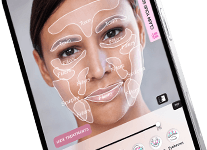We’ve all been there: staring into the mirror, wondering why our eyes always seem to tell a story of sleepless nights, even when we’ve had plenty of rest. Those persistent dark circles and puffy under-eye bags can make us appear fatigued and older than we feel, chipping away at our confidence. While countless creams and quick fixes promise miracles, what if there were a natural, promising solution to rejuvenate the delicate under-eye area?
This blog explores how PRP for under-eyes works, what to expect, and its effectiveness in diminishing dark circles and reviving tired skin.
Understanding Under-Eye Concerns
The skin around our eyes is fragile, often the first to show signs of aging and fatigue. This can manifest as:
Dark Circles: POH ( Periorbital hyperpigmentation) is caused by thin skin revealing blood vessels, excess melanin, and volume loss, creating shadows. Genetics, allergies, and lifestyle factors also contribute.
Fine Lines & Wrinkles: The delicate skin is prone to lines and “crow’s feet” from repeated expressions and loss of collagen/elastin.
Puffiness & Crepey Texture: Diminished elasticity can lead to a crepey appearance and puffiness.
These issues commonly impact confidence, making us look perpetually tired.
What Is Platelet-Rich Plasma (PRP)? Natural Rejuvenation Science
You may know of the “vampire facial,” but behind the viral fame lies a sophisticated cosmetic procedure utilizing your body’s innate healing power.
PRP is a cosmetic procedure that uses your blood to stimulate natural skin regeneration. A small blood sample is drawn and then spun in a centrifuge. This process separates the platelet-rich plasma, a golden liquid highly concentrated with vital growth factors, from other blood components. The PRP for under-eyes is then strategically injected into the under-eye area.
Platelets are rich in influential growth factors crucial for healing and regeneration:
- Transforming Growth Factor (TGF): Stimulates collagen and elastin production.
- Platelet-Derived Growth Factor (PDGF): Promotes new cell growth and blood vessel formation.
- Epidermal Growth Factor (EGF): Boosts skin cell turnover and healing.
- Vascular Endothelial Growth Factor (VEGF): Enhances tissue circulation and oxygen delivery.
By injecting PRP into the delicate under-eye skin, these factors work synergistically to:
- Reduce Dark Circles & Hyperpigmentation: PRP stimulates new cell growth and improves circulation, helping to lighten dark circles and reduce melanin.
- Smooth Fine Lines & Wrinkles: Boosting natural collagen and elastin synthesis restores firmness and elasticity around the eyes.
- Improve Texture & Dullness: Enhances overall skin quality from within for a smoother, more radiant complexion.

Expected Results & Recovery
Improvements from PRP therapy are gradual and progressive:
- Results Timeline: Subtle improvements begin within 2–4 weeks, with continued progress over 3–6 months.
- Benefits: Expect reduced dark circles, smoother texture, diminished fine lines, increased firmness, and a brighter, more refreshed appearance. Clinical studies support these outcomes, and patients report high satisfaction.
Recovery & Aftercare
- Immediately after: Mild redness and swelling (like sunburn) usually fade within 24–48 hours. Do not touch or wash your face for 6 hours. Skip makeup and active skincare.
- First 48 Hours: Use gentle, fragrance-free cleansers and moisturizers. Avoid strenuous workouts, hot showers, and saunas. Stay out of the sun; apply SPF 30+ once approved.
- Days 3–7: Continue moisturizing and hydrating. Mild flaking/peeling is normal. Hold off on active skincare until sensitivity subsides.
- Long-Term: For best results, we recommend three treatments spaced 4–6 weeks apart, followed by maintenance every 6–12 months.
Who Should Consider PRP for Under-Eyes?
PRP is an excellent option for individuals seeking a natural, non-surgical approach to address:
- Dark circles
- Fine lines and wrinkles around the eyes
- Crepey skin texture
- Mild volume loss and hollowness
Who should avoid PRP for the under-eyes? While generally safe, PRP is not suitable for everyone. Avoid PRP if you have:
- Active skin infections or inflammation in the treatment area
- Blood clotting disorders or are on anticoagulant treatments
- Specific medical conditions, such as Hepatitis C, HIV, or skin cancer
- Are you pregnant or breastfeeding
Consult a certified dermatologist or licensed practitioner before scheduling any aesthetic treatment.















